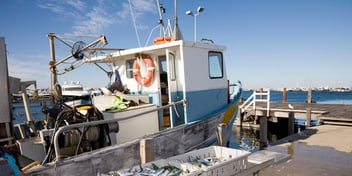Why we need more Indigenous voices in water resources management
Indigenous Australians have called the driest inhabited continent on Earth home for millennia, but they are by and large left out of current water resources management practices. How can the water industry better collaborate with Indigenous nations to better manage this valuable resource?
“This is a complicated issue – especially in terms of entitlements and water access – because water management has been operating in Australia for decades,” said Lachlan Sutherland, Aboriginal partnerships coordinator for water policy with South Australia’s Department for Environment, Water and Resources.
“There are a lot of legacy systems in place and established water users. To try and go back and address these issues with Aboriginal water policy is a politically challenging thing to do.”
Water and land rights are currently separated, something that “Indigenous people didn’t understand, because without water the land is nothing” said Brad Moggridge, a Kamilaroi man and hydrogeologist studying the interplay between traditional Indigenous ecological knowledge and western science.
Unless this difference is understood and explored, efforts to involve Indigenous Australians in water resources management and planning would continue to falter, said Michael Spencer, CEO of Water Stewardship Australia and chair of the international Alliance for Water Stewardship.
“More people understand the connection between Indigenous people and country, but by definition the country only exists and comes to life in relation to water. Having land rights is a step forward, but there are limitations on what you can do with the land if there’s no water to go with it,” he said.
Indigenous people own about 20% of the country’s land, but their water entitlements add up to less than 0.01% of Australian water resources. Fuelling this disparity is the fact that although many Indigenous Australian’s have intimate knowledge of this country’s land and water, much of it is hard to quantify.
“It’s hard to validate traditional knowledge; in a science journal, how can I reference my great-great-great-great-great grandfather who showed his descendants how to protect and care for our waterholes?” Moggridge said.
“It’s about seizing opportunities for Indigenous people to show they do have a right to water, and they have knowledge about its management that can add to and improve western styles of water management.”
Efforts to reconcile these differences are relatively young, but quickly gaining momentum. For example, as part of its 2016-17 state water plan, the Victorian Government allocated $9.7 million towards establishing a bespoke Aboriginal Water Unit.
It’s a step in the right direction, but high-level policy reform like this only works when coupled with grassroots community engagement, said Sutherland.
“There’s absolutely a policy gap in Australia, and it’s going to require not just high-level directives, but also individual organisations working within communities to make change.”
Nadine Riethmuller, manager for water planning for remote operations for Power and Water Corporation in the Northern Territory, said that while Indigenous engagement is not a quick endeavour, from her experience it’s a worthwhile one.
“It depends on long-term, trusted relationships between people in those communities and utilities,” said Riethmuller, who is also vice-president of the Australian Water Association’s Northern Territory branch.
“In many Indigenous communities, there are local authority systems or key knowledge holders who need to be engaged with first, so it’s good to know the appropriate forums to tap into and go from there.”
In addition to recognition of cultural significance and ownership of water, many nations want greater involvement in the commercial aspects of water resources management.
“Water has two dimensions: one is the recognition of cultural sites and cultural issues in relation to water,” Spencer said.
“The other – and of increasing importance – is the economic benefits of access to water.”
Common requests are environmental monitoring oversight, water industry training and employment programs, advice for navigating licensing systems, participation in water markets, and help building the capabilities of Aboriginal communities and organisations to take a more active role in all of the above.
“People have a strong connection to country and to their communities, and they want opportunities to develop both,” Riethmuller said.
An example of this approach comes from the Ngarrindjeri nation in southeast Australia. The nation won the prestigious Australian Riverprize in 2015 for its innovative approach to sustainable river basin management, in collaboration with the South Australian Government.
Sutherland said that one clear outcome of joint-nation workshops hosted by his department is that any approach needs to be nation-specific.
That last point speaks to a larger issue about getting more Aboriginal voices into the mix, said Moggridge.
“When you’re only one person speaking out, it can be hard to influence anything,” he said.
“I can only speak for my nation; I can’t talk on behalf of Aboriginal Australia. There needs to be a critical mass of Indigenous people active in this space, but it will also require the water industry to step outside its comfort zone.”
Read more about Indigenous water knowledge and industry collaboration in the latest issue of Current magazine here.
Related video:
https://www.youtube.com/watch?v=kZYXXg_gcZA


